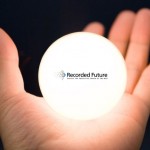Bad Web Pages and Bad Information

Despite its popularity and ever increasing uses for work, communication, function and entertainment, many web designers fail to consider the audience when designing web pages. All the focus is on the business or doing business and the audience gets little more than assumption and often complete dismissal. (The designer thinks they already know what the audience wants.) Bad web pages are the result.
One of the best examples this author can share is a recent experience. After a too close encounter with some breaking news, this author wanted to share the information with the local news stations. So, being the Internet friendly type, that was the means chosen for information sharing. Off to the favorite search engine to find local news stations. The search results were disappointing in themselves, yet a well-known local station was finally found. Optimistically, this author clicked on the link and entered the site thinking it would only take a minute or two to provide the details. After uncomfortable moments of what felt like trying to decipher a Chinese menu (in Chinese), no obvious link was found to communicate the information. Frustrated, it was back to the search results and another link. Click and the next home page was on the screen. Same problem. Plenty of advertising, no intuitive linking and no direct link to report the news tip. The contact link brought up a long form to complete which looked as if it would end up in a “slush” pile of web feedback emails. Click, out of there! Another roll of the dice with the search results and excitement electrifies the air. A link that says News Tip. Granted, the typeface was small and the pale color made it hard to read, but the link was immediately clicked. Result? “This page cannot be displayed.” Argh!
All these news web sites offered glitzy, flashy, colorful, gimmicky, even professional looking pages (all with numerous 8 pt font squinting opportunities), but they left out something very important to this author and potentially very important to them. After all, doesn’t the news require news to be news? How are they going to get information if they make information too hard to give?
No matter what the business, the website should be balanced between what the creator wants to tell or sell and what the audience wants and needs. If the audience is anyone other than the creator, then a bit of time getting to know and understand that audience could make the difference between pages that look good and pages that “do good.” Stop, listen to the audience, and then look at what is being offered on the page. The audience decides if it is a good web page or a bad web page, despite what the creator might think.
Note: I went ahead and sent an email to one of the stations. Are you sitting down for this one? I received an auto responder message confirming that my message was being forwarded and that they attempt to respond to all email with 72 hours. The next email into my box was from their postmaster telling me that the email was rejected because their mailbox was full. Talk about adding insult to injury! Bad web pages, bad web master, email “slush pile” flunky on vacation.




